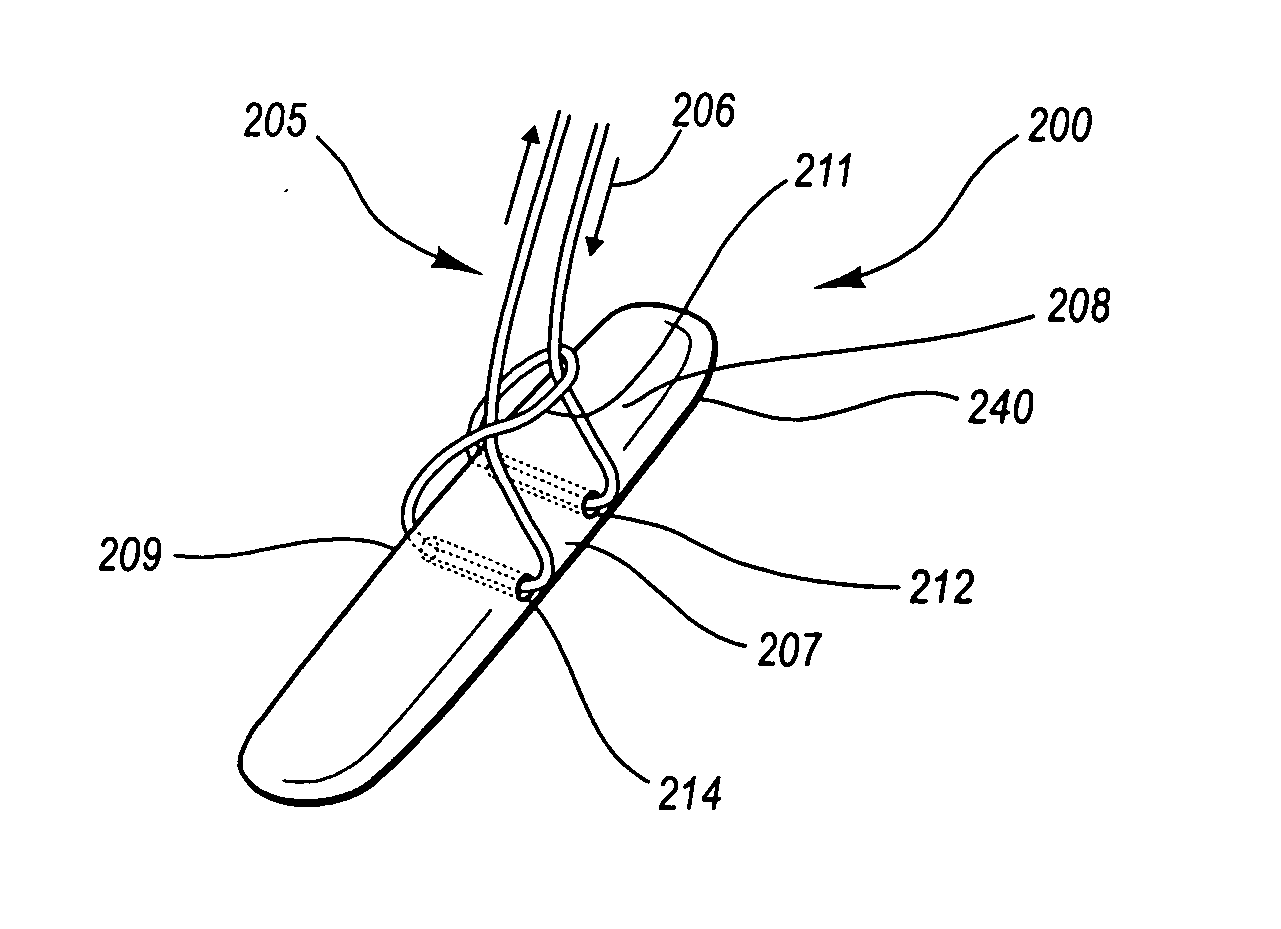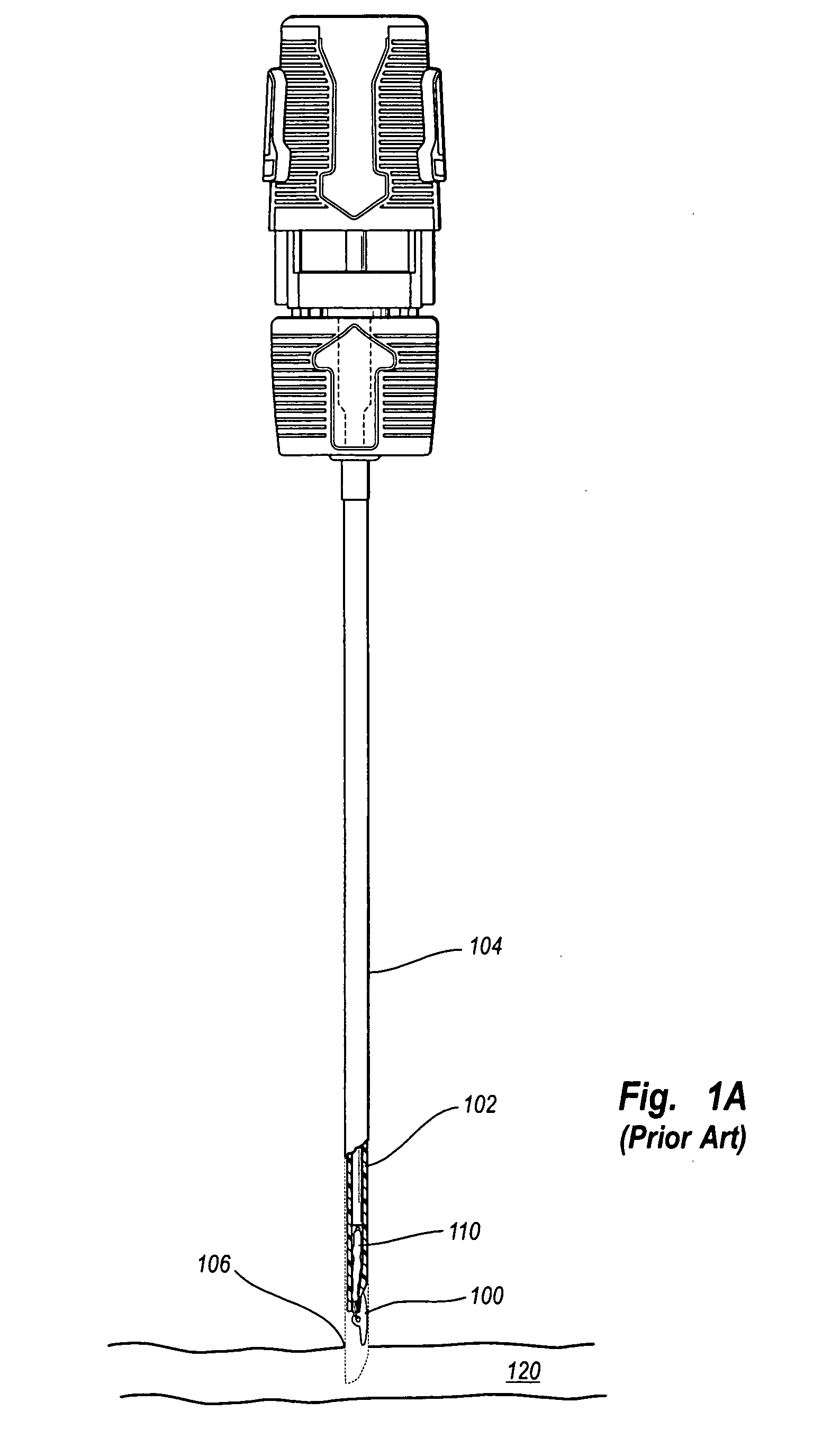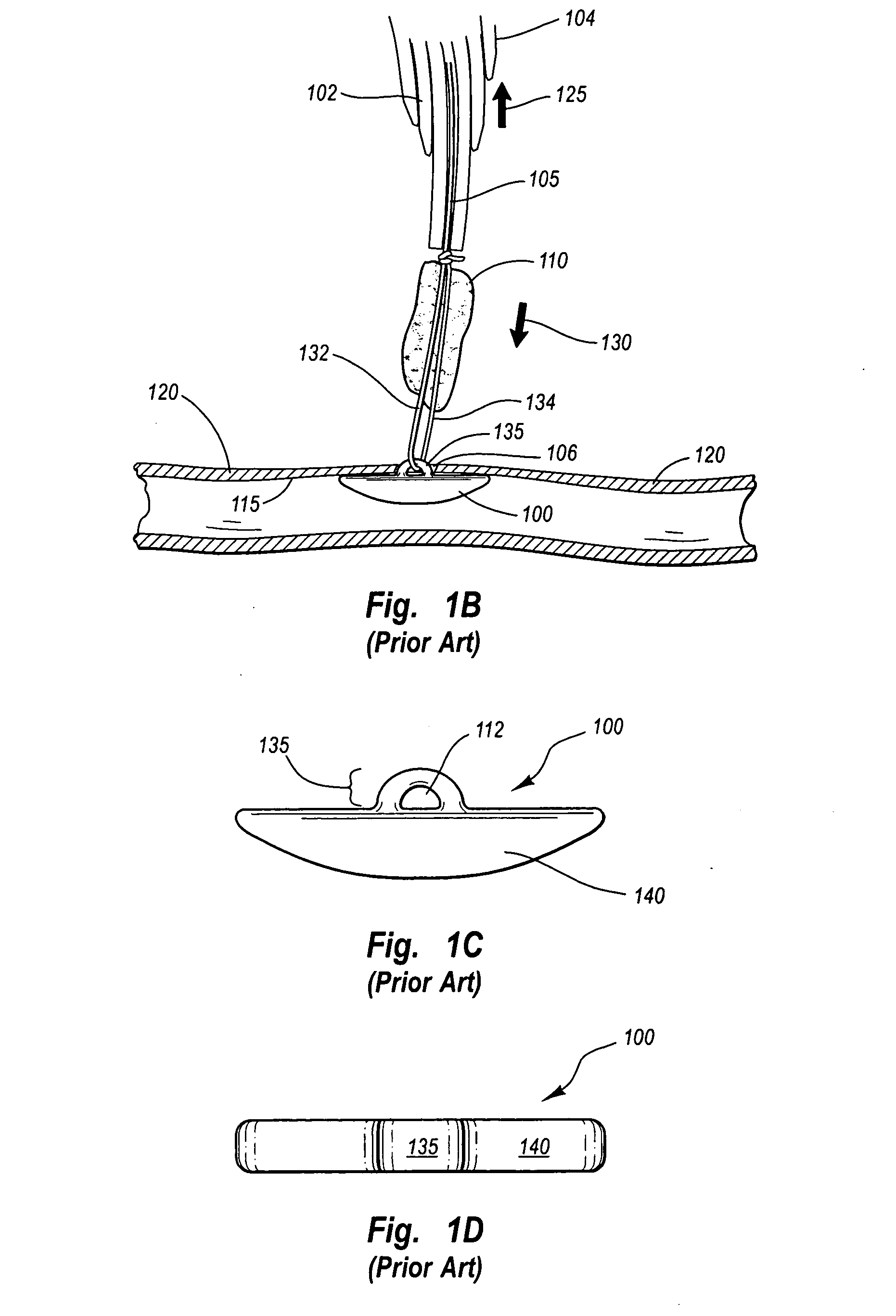Arteriotomy closure device with anti-roll anchor
a closure device and anti-roll technology, applied in the field of medical devices, can solve the problems of not being able to suture delicate vessels with the same technique, the anchor may not properly seal between the anchor and the collagen sponge, and the lateral roll of the anchor, so as to facilitate rapid healing, and minimize the lateral rotational moment
- Summary
- Abstract
- Description
- Claims
- Application Information
AI Technical Summary
Benefits of technology
Problems solved by technology
Method used
Image
Examples
Embodiment Construction
[0024]FIGS. 1A-1F illustrate a prior art tissue puncture closure device with a rotateable anchor. The prior art anchor is designated generally at 100. FIG. 1A illustrates the anchor 100 in a low profile longitudinal configuration resting outside of a carrier tube 102. The anchor 100 is substantially aligned with the carrier tube 102 in the low profile configuration shown. The carrier tube 102 and anchor 100 are shown inserted into an insertion sheath 104, which holds the anchor in its low profile configuration aligned with the carrier tube 102 and is partially inserted through a subcutaneous puncture 106 in an artery 120. In order to seal the puncture 106, the anchor 100 passes through the puncture 106 and the insertion sheath 104, and into the artery 120. When the anchor 100 exits the insertion sheath 104, it is no longer held in the low-profile configuration and it automatically rotates into an expanded transverse configuration as shown in FIG. 1B. The automatic rotation of the an...
PUM
 Login to View More
Login to View More Abstract
Description
Claims
Application Information
 Login to View More
Login to View More - R&D
- Intellectual Property
- Life Sciences
- Materials
- Tech Scout
- Unparalleled Data Quality
- Higher Quality Content
- 60% Fewer Hallucinations
Browse by: Latest US Patents, China's latest patents, Technical Efficacy Thesaurus, Application Domain, Technology Topic, Popular Technical Reports.
© 2025 PatSnap. All rights reserved.Legal|Privacy policy|Modern Slavery Act Transparency Statement|Sitemap|About US| Contact US: help@patsnap.com



